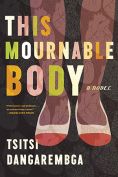Clock Dance by Anne Tyler
 New York. Knopf. 2018. 304 pages.
New York. Knopf. 2018. 304 pages.
Although the principal setting is 2017, the first part of Anne Tyler’s Clock Dance is divided into particular years—1967, 1977, 1997—each corresponding to a phase of protagonist Willa’s life from childhood, college years, first husband, to retirement in Tucson with a second husband. In each phase, her life is shaped by someone else.
Willa had been told by her father to divide her retirement into moments, living bit by bit. That’s his “clock dance,” since he always had to be ready to adapt to his wife’s vagaries. It’s an approach that can certainly lead to a certain passivity, molding oneself to others’ lives. It can be mechanistic, as in the robotic clock dance of moving arms that a teenager and her friends perform—reminiscent of the factory workers in Fritz Lang’s Metropolis.
Falling into such segmentation opens Willa to the criticism that she needs a clearer view of her future. Her life, she sometimes feels, is a rush across a stage, her body a blue blur or, if seen, a simple outline, like the icon of a woman in a restroom door.
Living by clock time, telescoping events into a blur, even a fixed image—not necessarily inconsistent figures—seems to typify her life in Tucson with her second husband. In retirement, he is a full-time golfer; Willa centers her life on his routines. There seems to be no intimacy, no social relationships, no activities she can call her own. Her sons and sister are distant, with little communication. She admires the statuesque saguaro cactus in her backyard—a central trunk with fixed arms.
As in other novels by Anne Tyler, it’s time for a detour. Willa responds to a call asking her to help care for a child in Baltimore whose mother is recovering from a leg wound. The woman is her son’s ex-girlfriend; the child is not her son’s. When she delays her return to continue to care for the woman, her husband suspects she is going to pieces.
That’s the main conflict. When will her son’s ex-girlfriend have recovered enough to get around on her own? How will this woman’s young daughter turn out, without Willa as a substitute grandmother? Can Willa separate herself from their lives, the neighborhood relationships and offered possibilities for engagement? Will this detour become the rest of her life?
If you stay with this book—with just about any Anne Tyler novel—it’s because you want to see where the moments will lead the characters. The characters and their relationships hold you. That’s especially true in this novel, where the clocked plot points are secondary to the durée of human affections.
W. M. Hagen
Oklahoma Baptist University












































